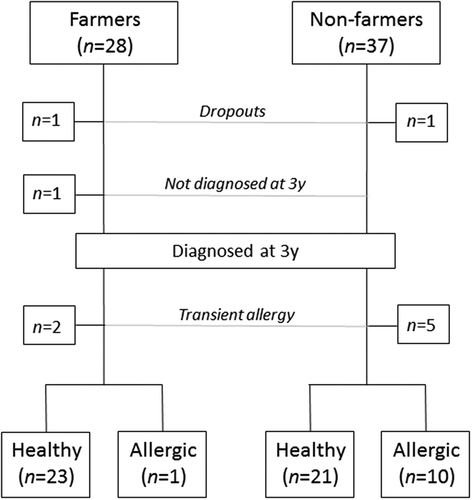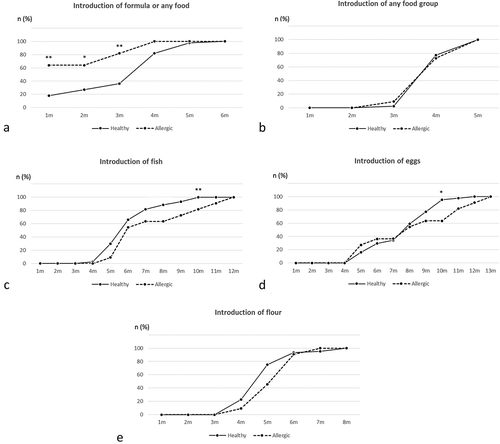Figures & data
Figure 1. Flow chart of subjects eligible for analysis between healthy children and children allergic at 3 years of age. One farm and one non-farm family withdrew from the study due to personal reasons or change of residence. One farm child was not diagnosed at 3 years of age and two farm children and five non-farm children were diagnosed as allergic at 1.5 years of age but not at 3 years of age (transient allergy); hence, these children were neither included in the healthy nor the allergic group.

Figure 2. Cumulative rate of healthy and allergic children for whom formula or food have been introduced at different time-points. Numbers were calculated by χ2 tests. Analyses were carried out for introduction of formula or any food (a), any food (b), fish (c), eggs (d) and flour (e). Significant differences between healthy and subsequently allergic children are denoted as stars of significance: *P ≤ 0.05, **P ≤ 0.01.

Table 1. Characteristics of farm versus non-farm children and healthy versus subsequently allergic children.
Table 2. Duration of breastfeeding and introduction of complementary foods in farm and non-farm children.
Table 3. Allergy diagnoses at 3 years of age.
Table 4. Duration of breastfeeding and introduction of complementary foods in healthy and subsequently allergic children.
Table 5. Logistic regression of allergy development, exclusive breastfeeding and introduction of flour, fish, and eggs.
